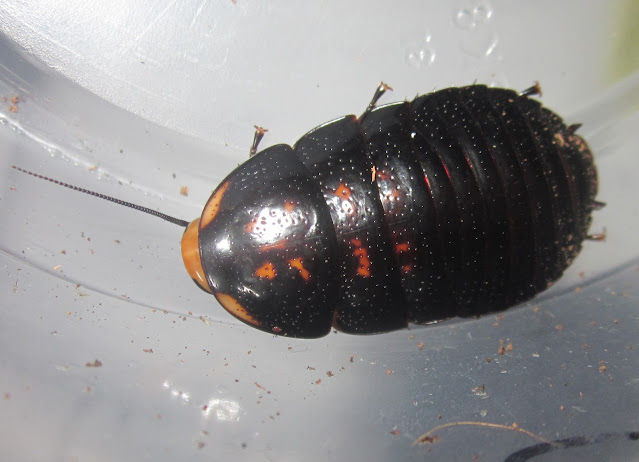Well, earlier this month Ty of Ty Dye Exotics offered to send me a box as a birthday gift, so I went through his list and picked out a couple goodies! 😄
Firstly I got a group of 15 Anallacta methanoides from him, since my previous group from Kyle isn't doing so hot and oddly refuse to lay me any ooths... 🤔 Granted, I put them in the same gallon jar I housed my Hemithyrsocera vittata and Balta notulata in, both of which crashed in that container... So either there's something seriously wrong in that setup like a pathogen or something that has persisted despite several cleanings, OR it's just cursed...
Anyways, I moved the old Anallacta group to a new setup and finally threw out the cursed jar... But just in case I decided to get another group from Ty this time, and am housing them in a separate container from my older group. Hopefully they'll do well for me this go around!
Secondly, I finally decided to see for myself what the entity known as the "Black Tiger Hisser" is in the US hobby. 😅 Ty got some from Kyle of Roachcrossing last year, so his are the old, "Pure" (or at least untainted for the last decade or so) stock.
Supposedly these are a black morph isolated from the US "Tiger" hisser stock usually labeled as "Gromphadorhina grandidieri", (though they are far more likely a form of Princisia vanwaerebeki IMO). However, from pictures I've seen, I actually think this black stain is just a G.portentosa (or more likely "portentosa" mutt) line... Some of the mature males I've seen online don't seem to have the anterior pronotum notch that all true "Tiger" hisser males would have... In which case these shouldn't be called "Black Tigers", nor should any other black hisser line in the hobby... That being said, I can only tell so much from pictures, so I finally got a group of this species to see in person what they truly are.
I've got mine housed in a well ventilated enclosure with a thin layer of coconut fiber as the substrate. They've got bark for hides, I'm keeping half the enclosure humid, the other half dry, and they're being kept at around 75-85F°. I'm offering dog food, fruits and veggies for food.
Here are some pictures of the nymphs:
These look very much like just dark Gromphadorhina portentosa in terms of coloration and morphology, if I remember correctly the true "Tiger" hisser nymphs I reared were more broad in morphology. Again though, time will tell, once I get a good sample of adult males I should easily be able to determine whether they're from the pure "Tiger" hisser line or not.
Anyways, that's gonna do it for this post, thanks again Ty for the present! 😁 Hope y'all enjoyed, thanks for reading, stay safe, and I'll see everyone next time! 😉
PS: If you're interested in my thoughts on "Black Tiger" hissers in general, see my older post on the subject:
And for my more recent suspicion as to the identification of pure "Tiger" hissers in general (Gromphadorhina VS Princisia) see my post:























































